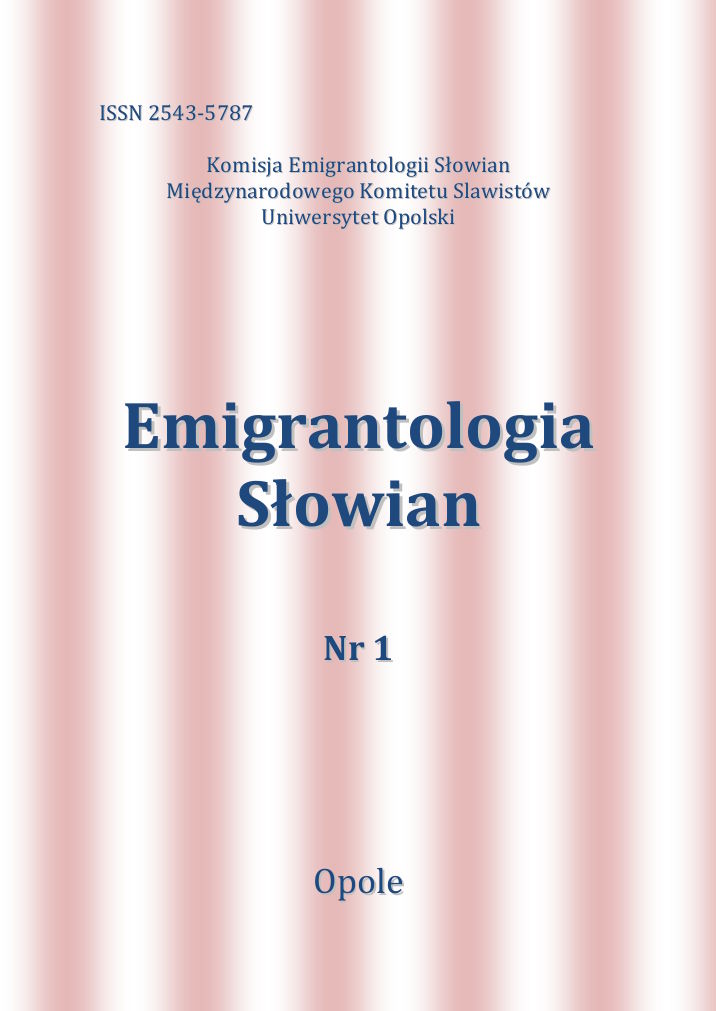
We kindly inform you that, as long as the subject affiliation of our 300.000+ articles is in progress, you might get unsufficient or no results on your third level or second level search. In this case, please broaden your search criteria.


Based on the literary and cultural material, the article discusses two functions played by the term of emigrantology as a legacy of three waves of Russian emigration in the 20th century. The term was introduced by Lucjan Suchanek to the research space of Slavic emigration. It has systematized the area of intellectual and scientific self-reflection (including literary studies, historiography, philosophy and theology, and cultural studies), which developed in the community of Russian emigration. Additionally, the term provides modelling of the need for interdisciplinary and in the nearest future trans-disciplinary studies on the complex cultural phenomenon of Slavic emigrations. In this particular context, the article presents major research directions and achievements of Russian studies in Poland.
More...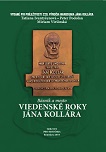
The revolutionary years 1848 – 1849 had a significant impact on the lives of all people in the multi- ethnical Habsburg monarchy. The revolution brought the Austrian empire and its sovereign new issues which had to be solved inevitably. In the new circumstances the main task for the imperial court was the adjustment of the public administration in the country which was to be handed over to new and reliable people. At the beginning of 1849 the government created a new advisory institution. The governmental advisors became the main proponents of the Slovak issues at the governing circles in Vienna. Ján Kollár was named the adviser at the beginning of April 1849 and thus, after thirty years in Pest, he came to Vienna where he later also died. In his new role Kollár focused on solving the Slovak issue – national rights of Slovaks which, in his opinion, were to be extended in Hungary in a several phases. Firstly he pursued to completely and definitely eliminate magyarization and finally bring it to its end. Following this aim he made some elaborates for the government. One of them, about national administration is still undiscovered. In others he was dealing with changes in the school system and in the Lutheran church in the Habsburg monarchy. Both documents are summarizations of Kollár’s ideas about how school system and Lutheran church should function in the monarchy with the emphasis on language and national equality. While working as the governmental adviser he also engaged in other spheres. He used his good relationships with the Austrian governing authorities for the benefit of Slovaks. He recommended people whom he trusted for important posts. He managed to put through the so called Old Slovak language (Czech language with some Slovak elements) as a literary language, was zealous to establish a great Slovak principality and he made efforts to solve all contemporary problems of Slovaks in Hungary. Shortly after arriving in Vienna he found himself at the Vienna University as a professor of “Slavic archeology“, which made it possible for him to devote his time to his greatest passion, i. e. studying Slavic past and mythology towards the end of his life. Thanks to Kollár’s stay at the university, his last works were dedicated to the oldest history of Slavs in the European area. He became the pioneer of archeological research in which he tried to use the available scientific works and also to create new scientific terminology. Staroitalia slavjanska… with almost 900 pages was Kollar’s largest volume published. It was a mixture of the method of his previous scientific works aimed mainly at etymological explanation of national names (Rozprawy…, Sláwa Bohyně…) with a new archeological range. The last elaborated sphere of Kollár’s scientific interest at the end of the 1840s and the beginning of the 1850s were the so called Prillwitz idols allegedly representing the deity from Retra, about which, towards the end of his life, Kollár wrote a vast book with the same title which was never published.
More...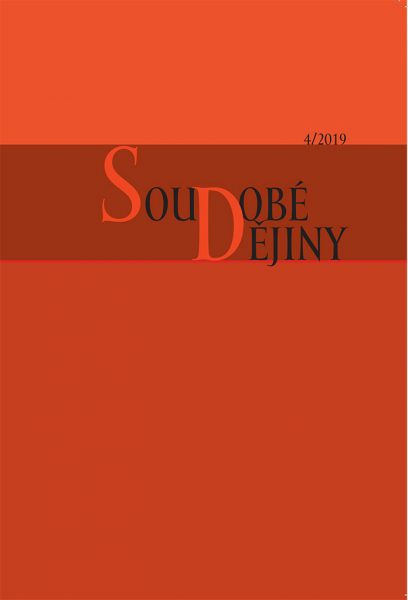
Prokůpek, Tomáš, Pavel Kořínek, Martin Foret, and Michal Jareš. Dějiny československého komiksu 20. století, Vols. 1–3. Prague: Filip Tomáš – Akropolis, 2014, 996 + 87 pp.,ISBN 978-80-7470-061-3. The reviewer sees the three-tome publication titled "History of the Czechoslovak comics of the 20th century" as a work which is impressive at first sight and based on extraordinarily voluminous and meticulous heuristics bringing amazing results in the form of a mass of reliable and often hitherto unknown information, and with an excellent graphic design. However, the superb positivistic performance of the authors implies, in the reviewer’s opinion, a problem with the reader’s ability to absorb the deluge of data often presented as tiresome lists of authors, names and characteristics of the pictorials without a framework that would keep them together. As a result, the general impression is fragmentary rather than compact and concise. In addition, the authors perceive comics as a specific literary-graphic genre and almost ignore interactions between this pop culture phenomenon and the society. The reviewer concludes that the authors have created a basic inventory of Czechand Slovak comics, but have not progressed toward a structured historical analysis.
More...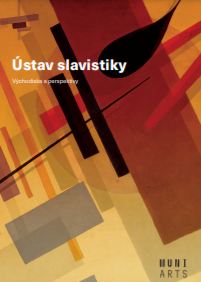
V roce 1997–98 byl na Ústavu slavistiky z iniciativy prof. Iva Pospíšila, dr. Ireny Hrabětové a již zvěčnělých doc. Vlastimila Válka (1932–2019) a doc. Jarmily Bartákové (1933–2003) založen obor Slovenština ve všech třech formách studia – bakalářské, magisterské a doktorské. Obor pomáhali konstituovat slovenští vysokoškolští učitelé, mezi nimi prof. Juraj Dolník, pozdější docentka Mira Nábělková (za výuku slovenštiny jí na konci jejího působení, kdy odešla do Prahy, na návrh vedoucího Ústavu slavistiky byla udělena stříbrná medaile Masarykovy univerzity) a další. Řadu let tu vyučovala dnešní docentka Anna Zelenková (často koeditorka Brněnských textů k slovakistice, sama Slovenka a slovakistka) a její manžel prof. Miloš Zelenka poměrně dlouho tato česko-slovenská setkání spolu s vedoucím ústavu spoluorganizoval a často také koeditoval publikační výstupy.
More...
This paper is focused on the literary interpretation of the utopian novel Inžinier Riava (1929) written by Ervin Holéczy, the peripheral Slovak writer. In this paper there are represented the opinions of the literary critics based on their critiques and reviews that were published in periodicals of those times. In this contribution there are confronted individual opinions of the literary critics amongst each other. These opinions create the image of acknowledgement of this novel by both – the critics and the readers in those times. The author of this paper summarises the opinions of literal critics and contemplates about the novel in context of so called “Trivial Literature“. The author of this paper offers the evaluation of the novel’s aesthetics and contemplates about whether this novel is rightfully placed to literary periphery and to the edge of the literary history interest.
More...
In the contribution i offer an analysis of the central stage of Hlbina’s creative period, when he was a well-established author who published poetry magazines and also various poetry considerations, but he was still alone and the only author of Slovak modern spiritual poetry. The greatest contribution of Hlbina poetry is seen in the application of the new authentic form of spirituality that he has achieved through his own creation of poetic prayer as a reliable medium between God and the poet. The aiming of the poetic expression of the poetic expression through the play with the word meant for Hlbina the corresponding form of new spirituality and at the same time clarification of the contemporary Slovak poetry by applying the elements of avant-garde. In the collection of Cesta do raja, Hlbina attempted to combine seemingly unrelated: new individual poetic vision and expression with traditional belief. It moves between Franciscan humility, overexposed simplicity, faithfulness to the tradition of Christian literature, and therefore does not impose biblical motifs, saints, prayers, traditional symbols.
More...
The present paper focuses on the relation between home and nature motifs in Slovak poetry. The motif of home was traditionally connected with nature, country and native village. However, the conventional opposition between nature and culture is being revaluated in the contemporary poetry. Several passages of the poetic texts prove the thesis about a period of so-called post-modern Romanticism characterized by escape from the nature, but anguishing poetic reactions on the social situation are symptoms of de-naturalization in the ambient of modern urban home. The de-naturalization, it means the loss of interaction with the home in nature, seems to be a part of a deeper process of identity crisis. De-humanization linked with de-naturalization is projected onto the creation of lyrical subject and issues into the usage of herbal and animal elements with unusual functions.
More...
Anna Horáková-Gašparíková came from the well-known Gašparík family from the city of Martin. Despite the fact that she lived in the Czech lands for the most part of her life, she regularly came back to Martin and maintained an intense contact with her countrymen. Her positive relation to the city was manifested in various forms in her literary work as well. Besides the chapter about Martin in the monograph Slovensko (Slovakia), she dedicated several newspaper articles to the city as well as a small booklet called Údolí Turce. Dva dopisy (The Valley of Turiec. Two Letters) written together with Karl Vik. As a literary critic, she also wrote forewords to collections Jozef G. Tajovský v kritike a spomienkach (Jozef G. Tajovský in Critical Works and Memoirs) and Janko Jesenský v kritike a spomienkach (Janko Jesenský in Critical Works and Memoirs), which represent a probe into the history (as well as the then events) of the city of Martin.
More...
The present paper focuses on the theme of the home and homeland in selected proses written by J. Čajak jr., who, despite a strong relationship to the surroundings of Dolná zem, returns in his proses to the youth spent in Slovakia and reminisces in them about the members of his national community. The author depicts the features of the life reality from different regions of Slovakia and the relation of individual characters to their home, which is reflected especially in their autobiographical character. The concept of the home in the proses from the Slovak environment is for Čajak connected with the feeling of emotional perception of the birthplace, which is reflected also in their literary processing.
More...
In a paper I will focus on three aspects of the selected prose by P. Jaroš from book Krvaviny. The first line will be the authorʼs work with older literary genres: folk-tale, fair-song, legend, which were popular in the Slovak territory mainly in the 18th century. They served as the dominant platform for talking, lecturing, or singing about the outlaw theme. I will analyse transformation of the traditional face of an outlaw in Slovak literature. On the plan of the character Pacho I will focus on what comes in story after the national symbol, which was Juraj Jánošík in Slovak native tradition. The third point is that I will try to answer the question of the importance and function of a subversive writing about the traditional outlaw theme in the literature, cultural, but also social or political context in the sixties and seventies of the 20th century.
More...
In this paper I will deal with the area of a city in writing of the Slovak nadrealist poets. City played an important role in writing of the French and Czech surrealists and this pattern is repeated also with Slovak writers. Poems Srdce Bratislavy I and II by M. M. Dedinský and Neskutočné mesto by Vladimír Reisel represent the most striking example. Beside them, regarding the motif of home, the area of Bratislava becomes important for the nadrealists mainly as a shelter during a war situation. In accordance with the cosmopolite perception of area, which is a part of nadrealist poetics, home is not considered to be a concrete place, more preferably to be a symbol of something worth protecting from a war conflict and its destructive consequences. In addition to the area of a city and home, the paper will deal with the motif of wandering, the character of a passenger or wanderer and their specific depiction in comparison to Czech and French surrealist writing.
More...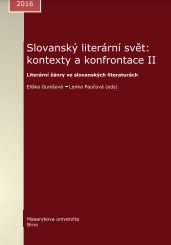
The aim of the paper is to approach the literary genre of the novel for women and its necessary modification in its application on Slovak socio-historical conditions of the 19th century. We attempt to legitimize the novel Sirota Podhradských as a specific and valuable contribution to Slovak literature from the socio-historical perspective as well as the genological perspective by the analysis of the text and by emphasizing the personal profile of the author. In this way it is also very important to highlight the Vansováʼs chosen strategy in her first novel Sirota Podhradských and also to clarify what goals the author followed with her strategy.
More...
In my paper I focus on selected poems of Štefan Strážay, which are analysed in regard to their (a)typical relations with the genre of elegy. First I outline the theoretical basis of the paper while stating that the main idea on which a classical elegy is formed I consider to be the verbalization of the feeling of loss through a lyrical form. Then I consider the way in which this moment is reflected in the poems of Štefan Strážay—I consider his work to be heavily influenced by elegy. Out of the whole collection of Strážay’s poems in my paper I focus on poem Elégia (Elegy) from collection of poems Igram (the name of Strážay’s home village, 1975), poem Za riekou (Beyond the river) from Malinovského 96 (the address on which Strážay lived in Bratislava, 1985) and two fragments of Zápisník (Notepad) from collection Elégia (Elegy, 1989). The aim of the paper is to comment on how the genre of elegy and its components are reflected upon in the work of one of the most important Slovak poets of the second half of 20th century, Štefan Strážay.
More...
The paper deals with the problem of representation of historical events in the play by V. Klimáček. We analyse the reflection of World War II and Slovak State in the play from the perspective of theories of cultural and collective memory. We are interested in the way in which the image of the historical event is formed by a narrative, which elaborates a problematic fragment of the history. We pay attention to perspective from which the reality is being shown, supposing that every analysis forms a specific monument, which subsequently has influence on forming of narrative (national) identity. We analyse the structural elements of the play, which allows showing events from different perspectives and requires an interpretation by a recipient (reader or spectator). At the same time we compare the dramatic text by V. Klimáček and the staging by R. Ballek, analysing means used to produce eventual meaning.
More...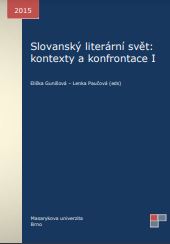
The paper, New Historicism in the Slovak Literary Context, aims to characterize literary movements and map significant personalities and studies that contributed to the new cultural orientation in literary scholarship. In the late 60s and early 70s, Slovak writers used their works to respond to the transformations in the Slovak society and culture. The main goal of this paper is to characterize New Historicism and to provide an interpretation of ‘Cycle of Palánkʼ by Ladislav Ballek that explores human stories at a particular time and place.
More...
The importance of the travelogue genre in Slavonic literature is indisputable. Social developments in 19th century, which were one of the consequences of industrial revolution, included the emergence of traveling as a leasure activity. It became more accessible to masses, which is reflected in literature of the time by an increased writers’ interest in the travelogue genre. The aim of this paper is to examine the social and cultural situation around and its influence on the creation of the first Slovak travelogue by a female writer, Pani Georgiadesová na cestách (Mrs Georgiades traveling) subtitled Veselý cestopis do Prahy na národopisnú výstavu (Cheerful travelogue to Prague to the ethnographic exhibition) and to define specific means used by the author, Terézia Vansová, that enrich and modify the characteristics of the contemporary travelogue genre. Furthermore, this work focuses on the influence of Vansovaʼs work and its links to contemporary Slovak literature. This approch allows comparing Vansovaʼs travelogue with similar contemporary literary works and pointing out the connections that indicate a close relationship with the Czech and Slovak literature of the period.
More...
The genre of personal diary belongs to one of the most subjective autobiography genres. The goal of the present study is to examine the autobiography and diaries written by Elena Maróthy-Šoltésová (1855–1939), a Slovak realist writer. Namely, to compare her diary My Children with Dostoyevskyʼs Diary of a Writer. The focus of the study is on the genesis, composition, genre and themes in both diaries. It is hoped that similarities in terms of their genre, compositional individuality, themes and biographical connections between Šoltésová and Dostoyevsky can be discovered.
More...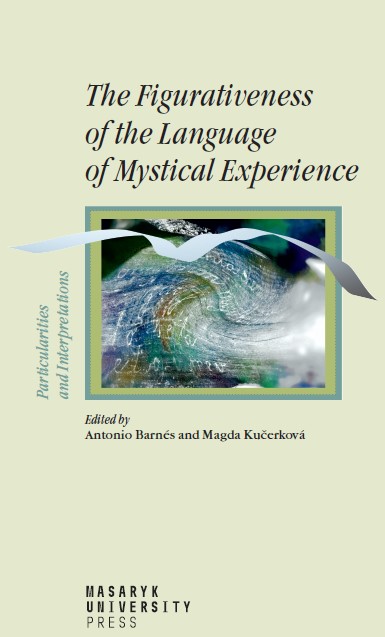
The Slovak Romantic Messianism is perceived by us as a phenomenon growing from a specific current epochal situation relating to a relatively rich tradition, which existed in the Slovak cultural context already in previous historical periods. By considering the characteristic features of production, its existence was often relativised. Nevertheless, it represents an important testimony of a concrete epoch. Its artistic implementation (perhaps today more than in the past) is being well appreciated, thanks to its interesting form and to its expressive and narrative strength or value. By focusing our attention on its expressive and thematic means, it is possible to prove that the authors tried to mediate a mystical experience to the readers. As mystagogues, they introduced and initiated the readers to the mysteries of God’s plans aiming at transformation of this world. In this sense, through their literary production, they invoked and prayed God to give them a chance to live a direct mystic experience in the reality. By pursuing this purpose, they filled their poetry with curious archaisms and neologisms (the so-called self-creation of language). They gave way to a speculative etymologism and poetical forms. Generally, they were syncretically stylying poetical shapes. And they often exploited experiments or complex strophic structures.
More...
In this paper the author treats the theoretical and practical problems raised by the analysis of literary phenomenon rotted in a national minority's life. Starting with the content of the idea, the term itself is questionable, too. The author in Slovak prefers slovenski literatúra v Rumunsku and in Romanian the Slovak-speaking literature of Romania. Presently the Slovak literature is considered to embrace every literary work written in Slovak, irrespective of the place and context it appears in, that is the Slovak-speaking literature of Romania can be included in it. The attention is focused in what follows on the context of the Slovak speaking literature of Romania, being detailed the history of Slovak communities in Romania, the different epochs of its development, the relationship between the oral (popular) tradition and the written literature, as well as specific aspects, multiculturalism and multilinguism, emphasizing the role of personalities who illustrate the author's theses such as Jozef-Gregor-Tajovsky, Peter Suchansky, Pavol Bujtár, Ondrej Stefanko, Ivan Miroslav Ambrus, and so on.
More...